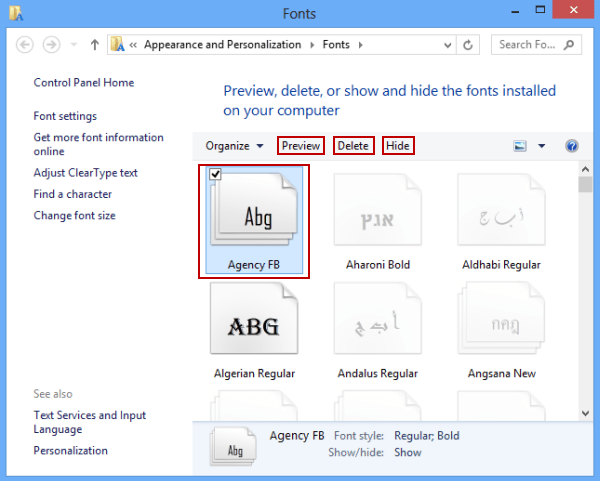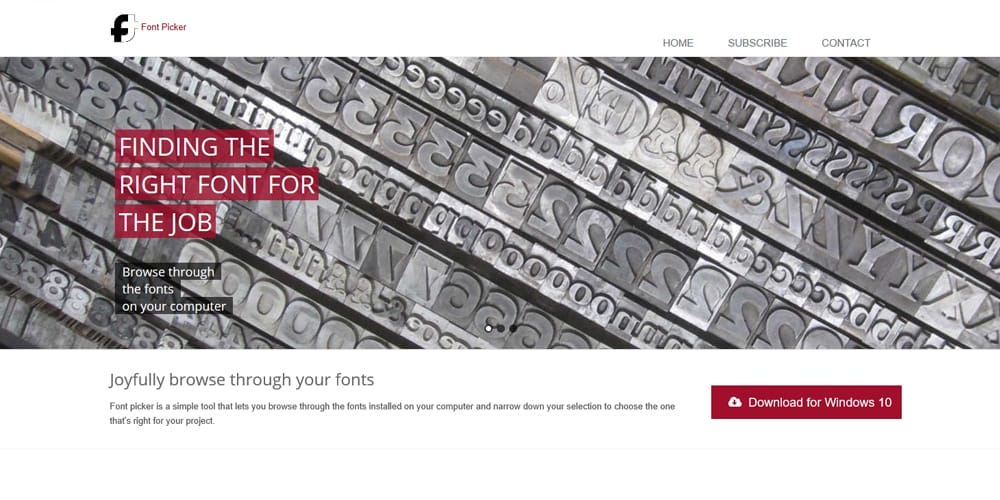

- HIDE SYSTEM FONTS FROM RIGHTFONT INSTALL
- HIDE SYSTEM FONTS FROM RIGHTFONT WINDOWS 10
- HIDE SYSTEM FONTS FROM RIGHTFONT WINDOWS 7
- HIDE SYSTEM FONTS FROM RIGHTFONT WINDOWS
This is actually not as easy as it sounds as you cannot list all system fonts on Windows to find out which are missing. Here you need to click on restore default font settings to remove all font customizations on the operating system.Type change font settings and select that result from the list.Press the Start button to open the Start Menu if you are running Windows 7, or the Start screen if you run Windows 8.This can be necessary after font settings have been modified either by a user or by programs on the system.įont settings determine among other things which font is used to display window titles or text in notification boxes.
HIDE SYSTEM FONTS FROM RIGHTFONT WINDOWS 7
It is easy to reset all font settings in Windows 7 or Windows. Resetting font settings Windows font settings So what can you do if you have accidentally deleted fonts that you still require? And how can you remove non-system fonts from the operating system without running the risk of removing system fonts? If you happen to remove fonts, by loading the fonts control panel applet and simply hitting delete on the keyboard after selecting fonts, you may remove system fonts that are still used by programs running on Windows. There is no clear distinction between system and third-party fonts in Windows. That's why third-party programs such as Font Frenzy were created which provided that functionality. Older versions of Windows don't ship with options to remove non-system fonts from the system. We mentioned back in 2007 that fonts can slow down the start of the operating system, and things do not seem to have changed much in this regard.
HIDE SYSTEM FONTS FROM RIGHTFONT INSTALL
If you install autostart programs for instance, or too many fonts, then you may notice that system start will slow down regardless of the improvements that Microsoft made. To unhide a hidden font, select it in the list of fonts and select " Show".While that is great, it does not mean that the startup time won't increase. The hidden fonts appear as semitransparent icons in the font list. Alternatively, you can right-click on the selected fonts and select the Hide command from the context menu.

And if a font has multi-color capabilities built into it, then the preview will demonstrate this. The previews use a variety of interesting strings that are selected to match the primary languages that each font family is designed for, together with your own language settings. In Settings, a dedicated page for Fonts settings provides a short preview of each font family. A refresh of the Fonts UI to show off the newer capabilities was long overdue.
HIDE SYSTEM FONTS FROM RIGHTFONT WINDOWS 10
Instead of the classic applet, recent releases of Windows 10 offer the Fonts page in Settings, which is able to show off newer font capabilities, such as color fonts or variable fonts. You may be familiar with the classic Fonts Control Panel applet, which you could use to see the fonts that are currently installed, or to install or uninstall fonts.

The new section, called simply "Fonts", can be found under Personalization. Starting with build 17083, Windows 10 features a special section in the Settings app.

OpenType is the more modern format, which can support any writing script, has advanced typographic "layout" features which prescribe positioning and replacement of rendered glyphs. They support scaling and look sharp on modern displays. They either have TTF or OTF file extensions. Windows 10 comes with TrueType fonts and OpenType fonts installed out-of-the-box.


 0 kommentar(er)
0 kommentar(er)
